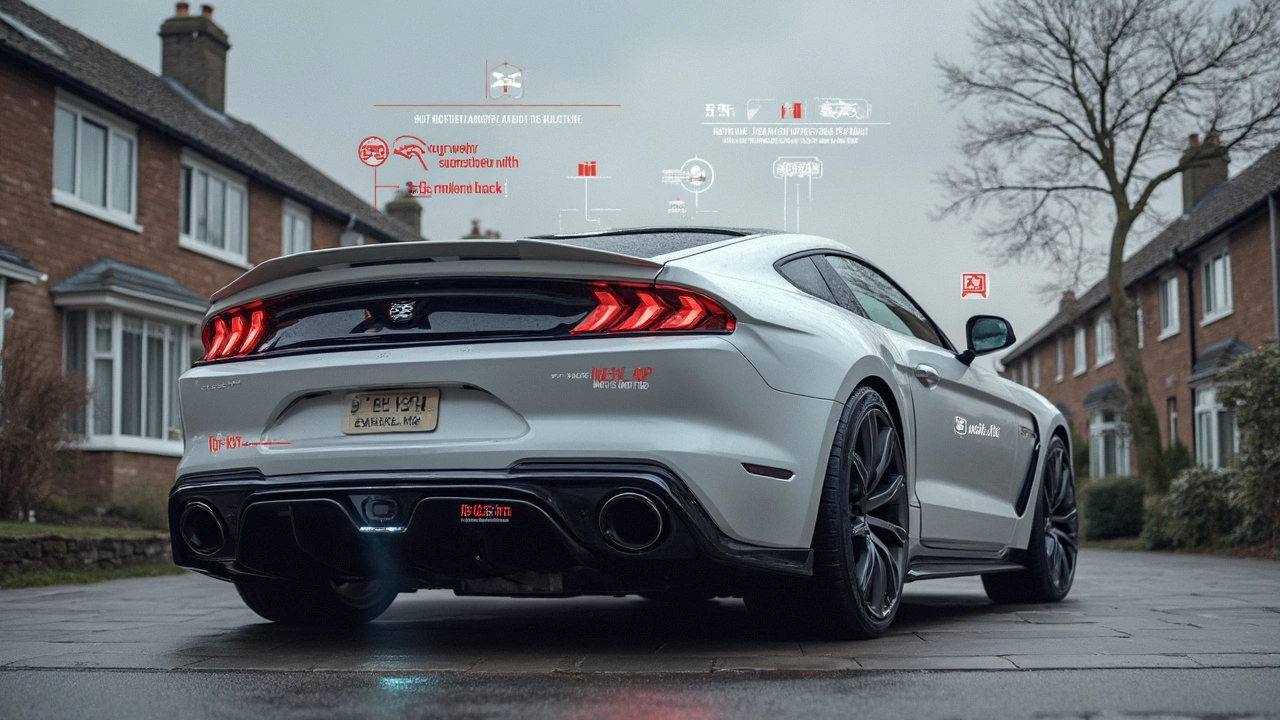If you’re eyeing up a cat back exhaust, you’re probably hoping for more power—and maybe that throatier sound too. But how much more horsepower can you really expect after bolting one on? Let’s get real about the numbers, because there’s a lot of old-school garage talk and marketing hype floating around.
First things first, a cat back exhaust swaps out the piping, mufflers, and sometimes resonators from the catalytic converter all the way to the tip at the back. The point? Smoother flow, less restriction, and sometimes a bit of weight savings. Makes sense, right? Less effort for your engine to push out those exhaust gases should mean more power on tap.
But before you start dreaming of huge HP spikes, keep reading. The gains from a cat back are real—but they’re probably not as big as some would have you believe. Let’s dig into what’s realistic, why results can swing up or down, and how to get the most horsepower for your effort and money.
- What a Cat Back Exhaust Actually Does
- Horsepower Gains: Numbers You Can Expect
- Why Results Vary So Much
- Choosing the Right Setup for Your Car
- Common Mistakes and Misconceptions
- Tips to Maximize Your Cat Back’s Benefits
What a Cat Back Exhaust Actually Does
So, what’s really going on under your car when you swap to a cat back system? It’s not magic—just smarter plumbing. A cat back exhaust replaces everything after the catalytic converter. That usually means bigger, smoother pipes and a less restrictive muffler. Some kits even ditch the resonator for louder sound. You keep the catalytic converter, so you’re still legal and passing emissions tests in most places.
The main goal here is to reduce how hard it is for the exhaust gases to leave your engine. Less back pressure means the engine breathes easier—think of it as unclogging your nose. That should help your engine make power a little quicker and even rev a bit faster. And yeah, most cat backs drop a few pounds off your car, since they usually use lighter stainless steel instead of thick stock parts.
"Upgrading to a cat back exhaust is one of the simplest ways to improve exhaust flow and get a bit more out of your engine, without touching emissions equipment." — Car & Driver, April 2023
What exactly changes depends on the kit, but here’s what most cat back exhausts upgrade:
- Mufflers (less restrictive, sometimes louder)
- Piping (wider, with more direct bends)
- Tips (usually for style)
- Resonators (sometimes removed, sometimes replaced)
The exhaust upgrade isn’t just about sound or how things look out back. Here’s why car folks reach for these kits:
- Better flow = more potential horsepower
- Sportier sound—often deeper and louder
- Slight weight savings
- Usually a straight bolt-on job
Some numbers people like to see real data. Here’s a quick look at OEM versus aftermarket cat back setups:
| System Type | Pipe Diameter (inches) | Average Weight (lbs) | Restriction Level |
|---|---|---|---|
| OEM Stock | 2.25 | 32 | High |
| Cat Back Exhaust | 2.5 - 3.0 | 22 | Low |
The main takeaway? A cat back exhaust doesn’t touch emissions hardware, so it won’t mess up your legal status. It simply opens the pipes, lets your engine exhale easier, and—if the rest of your setup can use it—makes a bit more power for you to enjoy.
Horsepower Gains: Numbers You Can Expect
No one likes empty promises, so here’s what you actually get with a cat back exhaust: most street cars see between 2 and 5 extra horsepower at the wheels. That’s the honest truth. Sometimes you might get a little more, maybe stretching up to 10 HP if your engine is already tuned up or your stock system was really choking things off. But you’re not going to bolt on 30 horsepower out of nowhere.
Check out this table with some real-world dyno numbers—from basic daily drivers to sporty performance cars:
| Car Model | Cat Back Brand | Reported HP Gain |
|---|---|---|
| 2018 Honda Civic 1.5T | Magnaflow | +4 HP |
| 2021 Ford Mustang GT | Borla | +7 HP |
| 2017 Subaru WRX | Cobb | +6 HP |
| 2019 VW GTI | AWE | +5 HP |
| 2022 Toyota Tacoma V6 | Flowmaster | +3 HP |
Notice something? The gains are modest. But there’s a good reason—cat backs mostly free up what’s already there, rather than unlocking hidden reserves of power. Most modern engines are pretty efficient from the factory, especially with tight emissions rules.
If your car has other mods—like a high-flow intake, headers, or even a tune—cat back gains stack up a bit better. But as a standalone mod, don’t buy one just for big HP jumps. Buy one for the sound, a bit of extra flow, and as a foundation for future upgrades.
Why Results Vary So Much
You’ll notice some folks brag about picking up 20 horsepower from a cat back exhaust, while others say they barely felt a thing. What gives? The truth is, there are a bunch of reasons why the numbers are all over the place.
First big factor—your car’s engine and its stock exhaust system. If your factory exhaust is already pretty free-flowing, like in many modern performance cars, a cat back might only give you two or three extra horses. On the other hand, older cars or base models with smaller, more restrictive pipes can show bigger jumps, sometimes 5 to 10 HP, but even then, you won’t see huge numbers unless you’ve got other upgrades.
Next up is engine type and size. Naturally aspirated engines usually gain less than turbocharged engines. That’s because a turbo engine can take better advantage of improved flow and move more air, especially if you pair upgrades together (think a tune, intake, and less back pressure). Even then, don’t expect miracles from just one change.
The specific design of the cat back exhaust matters a lot too. Larger diameter pipes and straight-through mufflers can boost flow, but only if your engine actually needs it. Put too big a pipe on a small engine and you might even lose power down low because you kill backpressure that little engines rely on.
Installation quality counts as well. If the kit isn’t lined up right, or you end up with leaks, you’re not going to see any real gains. Sometimes people expect big performance jumps just because the car sounds meaner after the swap, but there’s no real horsepower increase to back it up.
- Engine type and mods play a huge role—more mods usually mean more gains from the cat back.
- The stock exhaust’s design can either choke things up or be pretty efficient already, which limits the effect.
- Aftermarket exhaust sizing is key—too big or too small can hurt instead of help.
- Quality of install matters almost as much as the hardware itself.
Bottom line: you can’t just bolt on a cat back exhaust and expect your ride to transform. The gains depend on what you started with, what else you’ve done to the car, and how well everything’s put together.

Choosing the Right Setup for Your Car
Picking out a cat back exhaust can be overwhelming with all the styles, brands, and sizes out there. But the main thing is finding a system that suits your engine, your driving style, and your goals—whether that’s power, sound, or both. Not every exhaust is a one-size-fits-all upgrade.
Pipe diameter is one place to start. Go too narrow and you’re not really helping flow. Go too big and you might actually lose low-end torque—the engine needs a little backpressure, especially on most stock setups. Here’s a quick breakdown for typical street cars:
| Engine Size | Recommended Diameter |
|---|---|
| 1.6L - 2.4L (4-cyl, stock/tuned) | 2” - 2.25” |
| 2.5L - 3.5L (V6, small V8) | 2.25” - 2.5” |
| 4.0L+ (large V8, performance) | 2.5” - 3” |
Next, think about material. Most cat backs are made from either aluminized steel (cheaper, but can rust out) or stainless steel (costs more, lasts way longer—especially in snowy areas).
Muffler style is another biggie. Straight-through (glasspack) mufflers usually flow best and sound more aggressive. Chambered ones are a little quieter. Resonators help kill drone if you do a lot of highway miles.
One often-overlooked tip: check emissions rules in your state or province. Some areas are strict, and certain exhaust notes or flow rates can get you failed inspections or unwanted attention from police.
If you’re gunning for the best gains, try to match your cat back with other mods—like a high-flow air intake or headers. That way, you’re letting your whole system breathe, not just the tail end.
- Match pipe diameter to your engine for balanced power and torque
- Invest in stainless steel if you want durability
- Pick your muffler type based on how much noise you want to live with
- Double-check street legality in your area
- Pair your cat back with other bolt-ons for more noticeable performance
Diving into reviews and forums for your specific car model is never a bad idea. Certain setups just work better on some engines—having proof from folks who’ve already tried them is worth its weight in gold.
Common Mistakes and Misconceptions
People jump into cat back exhaust upgrades expecting miracles, but the real results are often misunderstood. Some mistakes and myths keep floating around, especially on forums and social media. Here’s what actually matters if you want to avoid wasting money or being disappointed.
- Believing a cat back exhaust adds massive horsepower: The biggest misconception is that you’ll instantly unlock 30, 40, or even 50 extra HP with a basic cat back install. Real-world gains, for most stock cars, usually sit between 2 and 10 HP. Some turbocharged engines or models with super restrictive factory exhausts might see a bit more, but cat backs are not a magic bullet.
- Thinking any cat back is an upgrade: Not every kit fits your car’s needs. If the piping is too big for your engine, you actually risk losing low-end power because of reduced back pressure. It’s all about matching the system to your car’s displacement and power goals.
- Ignoring the rest of the exhaust path: A cat back exhaust only replaces part of your exhaust system. If your factory catalytic converter or headers are already highly restrictive, the cat back won’t make much difference on its own.
- Assuming sound = power: Louder isn’t always better. Some kits just make your car noisier without real horsepower gains. Good cat backs are designed for flow, not just for noise.
- Not checking for proper installation: Even high-quality kits can rob you of gains (or worse, cause leaks) if you don’t install them right. Leaks at pipe connections or poor alignment can actually reduce performance and cause annoying rattles.
| Engine Type | Stock HP | Average HP Gain |
|---|---|---|
| Small NA 4-cylinder | 130 | 2–5 HP |
| Modern V6 or V8 NA | 250–400 | 5–12 HP |
| Turbocharged 4-cylinder | 220–320 | 8–15 HP |
| Performance Cars (factory-tuned) | 300–500 | 5–10 HP |
If you want the best results, always research which size and style of cat back is actually tested for your car’s engine. Combine exhaust upgrades with other mods, like a tune or better intake, if big power is the goal. And remember: any real boost comes from the full setup working together, not just from swapping in a shiny new muffler.
Tips to Maximize Your Cat Back’s Benefits
If you’re going to spend money on a cat back exhaust, you want to squeeze every bit of power and fun out of the upgrade. Just bolting it on can bump your performance a little, but there are a few smart moves to get even more from your investment.
First off, always match your cat back exhaust to your car’s engine and goals. Slapping on a fat pipe doesn’t automatically mean more power—sometimes it kills low-end torque, especially on four-cylinders. Research what works for your specific make and model. Most modern cars see the best results when the pipe diameter fits the engine size and intended power level.
If your wallet allows, pair your cat back with other airflow upgrades. A high-flow air intake and better headers can create a smoother path for the air-fuel mix and exhaust, unlocking a little extra horsepower. This combo is often more effective than a single mod on its own.
Tuning can make a huge difference. A lot of folks skip this step, but an ECU flash or chip tune adjusts your car’s brain to work with the new exhaust flow. That’s when you’ll see the real magic, especially if you’ve got other mods in play. Shops typically charge a few hundred bucks for a good tune, but the difference at the wheels can be night and day compared to just the hardware swap.
Quality matters more than price. Stick with proven brands, especially ones with dyno sheets or honest reviews from drivers with your car. Cheap eBay pipes sometimes save cash upfront but can rust, drone annoyingly, or even sap power because of bad flow.
- Double-check for leaks after install. Even a small leak at a clamp or joint messes with your power and sound.
- Use stainless steel for better rust resistance, especially if you live in a snowy or coastal area.
- If you drive an older car, replace gaskets and rubber hangers while you’re at it. Old, brittle parts are a recipe for extra noise and lost energy.
Don’t forget periodic maintenance. Dirt and carbon build-up in your cat back can undo performance gains over time, so check it out when you’re under the car for oil changes.
At the end of the day, slapping on a new cat back exhaust is just the start. Pair it with the right supporting mods, maintenance, and tune, and you’ll actually feel those horsepower gains—not just hear them.

